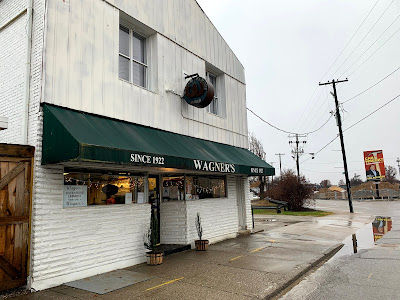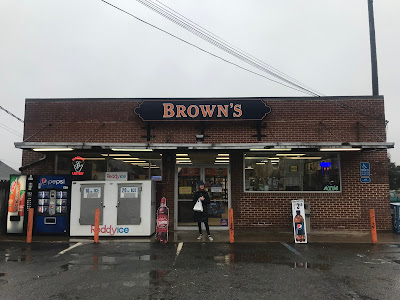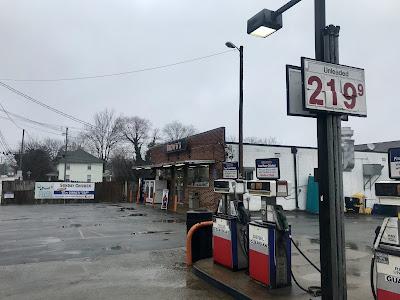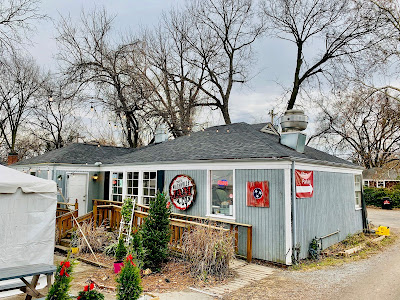
Imagine London in 1946. Imagine Dresden that same year. Imagine a city razed to rubble only to rebuild itself after the smoked has cleared, one brick at a time, as the bigger, better conurbation it always wanted to be. Imagine all of that, and you will have successfully imagined Nashville of 2020. That’s right, boy-o, Music City is brand new all over again. See the dozens of tower cranes etched like the calligraphy of promise across the new city skyline. See the throngs of white people flocking to restaurants where they can Instagram pix of their hipster eats. See, too, the neighborhoods of south Nashville—the same hood where country music legend Steve Earle once claimed that his pistol and a hundred-dollar bill was all he needed to get himself killed—choked with freshly minted houses and newly paved driveways crowded with BMWs and Audis still possessing that new car smell. See all of this and wonder: where did the old Nashville go? The Nashville of Ernest Tubb and Kris Kristofferson and Earl Gaines and Freddie Waters. And wonder, too: why did it have to go away as quickly as it did? Because Nashville now seems wounded—to this outsider anyway—with injuries almost entirely self-inflicted and recklessly incurred through a kind of wanton urban self-immolation wherein the sins of being once-poor and “backward” have been purged through the act of pure erasure. Entire sections of the city—and the poorer populations who once lived there—have been razed and simply carted away to make room for Starbucks and Orange Theory and dog parks where Golden Retrievers can shit comfortably on grass made from short-pile polyethylene while their Lululemon-wearing owners sun themselves on yoga mats and scroll through digital subscriptions of the New York Times.
Change, we know, is the inevitable derivative of modernity, with stasis as its enemy and nostalgia its false god. To resist change is—in the parlance of the South—an exercise in pissing up a rope. It’s futile. But change whose rapidity disallows any backward glance at, or rectitude for, the past seems a fool’s errand in the vanquishment of the very things that made you who you are. The Nashville of year 2020 now sits at the confluence of old and new and in the middle distance of its future and past which, as I’ve just discovered on a recent visit, has made for some very brackish cultural waters through which its citizenry must now swim.
 |
| George Jones & Me |
Whether the changes that Nashville’s gentrification has engendered are for better or worse is not for me, a thirty-six-hour visitor from Chicago, to decide (though I am now old enough to suspect the answer—it pains me to admit—is both). I’ve got no skin in this game beyond a sentimentalist’s hope that the pomade-wearing, Jim Beam-swilling, bloody-knuckled faction of underdogs will win (they won’t). Today, this one day in late November, I’m just a visitor to Nashville, a tourist, lacking any real insight into the machinations of what city planners now hope to achieve though their head-long blitzkrieg across Nashville and the eradication of its country-fried past. But what’s most palpable to anyone paying attention to this cultural dust-up is best evidenced on the plate—Nashville is currently in the throes of a culinary renaissance born from this very tension between old Music City and new. This fight over food ways has made Nashville—if by accident—a gastronomic wonderland and easily one of the finest food destinations in the American South.
Three meals in a single day across Nashville. That’s all you’ll need to grasp Nashville’s gastronomic renown. Three meals representing Nashville both new and old. Because that’s all it took me to understand the city’s quiet culinary greatness.

It could have been a Chipotle. It could have been a Panera. This fast-casual walk-up biscuit shop with its clean floors and its bright lighting and its fresh-faced helper ready to take my order. I wanted to hate this place the way the pious hate heretics—with a fervency immaculate and pure. But one look at the menu behind the counter gave me pause. It made me think. There were tried-and-true favorites of Southern cooking up there: grits and sorghum and fried green tomatoes. Everything you’d want and expect in a Southern eatery. But something else was afoot here. Something entirely new to the biscuit business: guacamole and goat cheese and kale, all there with nary a whiff of irony; just progressive flavor combinations that sounded, well, delicious and sensical to the southern palate. So I ordered the Hollerback Club: a biscuit topped with fried goat cheese, kale, lemon Dijon vinaigrette and tomato jam (I added an egg for a mere dollar). My wife (who’s appeared for the last five years in this blog as the enigmatic X, and yeah, I married her boys) opted for the Avocado Smash Toast—that cornerstone of millennial gastronomic identity—and topped with watermelon radish, lemon Dijon, and paprika (for the record: my wife is most emphatically a card-carrying member of Generation X). None of what was on my plate should have worked. It was too…ambitious for the American South. But work it did. And gloriously. In my astonishment, I pounded on the table. I stomped on the floor. I was gob smacked. The food of Holler and Dash was nothing short of extraordinary. And so I ate on until nothing was left on my plate save a few biscuit crumbs and the ruins of my self-esteem and culinary pride.

Under the steady hands of Chef de Cuisine, Jason McConnell, and Director of Culinary, Brandon Frohne, Holler and Dash seems to be doing everything just right. Forget the fact they cook and serve in the fast-casual format. Forget the fact they have locations outside Nashville in Florida, North Carolina, and Alabama. Forget the fact that they’re part of that mercenary force of regional investors who have invaded (and helped gentrify) south Nashville. Consider, instead, what’s on the plate: a deeply delicious and wholly sincere attempt to honor the staples and traditions of Southern cooking while looking beyond the confines of culinary orthodoxy to better embrace flavors that enhance traditional ingredients. And that’s the point of this whole exercise, is it not: to move forward while honoring what’s come before?
Holler and Dash are doing just that, and as good—if not better—than anyone else is the business of biscuits.
Unless…
…unless I’m getting this all wrong. Not the part about the deliciousness of Holler & Dash’s food, mind you. That’s not in dispute. What I’m likely getting wrong here is the assumed ease with which Nashvillians will willingly tuck into a plate of biscuits made by fast-casual carpetbaggers from parts unknown.
Because maybe, just maybe, the idea of breakfasting at what many in Nashville surely perceive as the gastronomic garrison of an invading army of culinary financiers runs heterodox to everything locavores in Nashville hold as sacrosanct in their collective mission to support the home team of local restauranteurs.
If that’s you—because it’s almost always me—then I strongly encourage you to breakfast at the insistently indigenous Nashville Jam Cafe. Because eating in Nashville doesn’t get any more local than this. Located in a converted mid-century house in the mostly-residential Berry Hill neighborhood of south Nashville, the Nashville Jam Café is a brick-and-mortar offshoot of the fabulous Nashville Jam Company, culinary love child of Cortney and Gary Baron, the married makers of some of the finest jams I’ve ever had the pleasure of shoving into my mouth.

My wife and I sat at a picnic table under a tent in the front yard of the erstwhile house and feasted on the quintessence of Southern breakfast making: four wonderfully delicious biscuits for my wife (served with a veritable flight of Nashville Jam Company’s best offerings, some of which—Garlic & Onion, Raspberry, and the truly transcendental Smokey Tomato—we’ve since ordered online), while I made short work of the gloriously homespun pimento cheese and bacon omelet with attendant riced (and amazingly risotto-like) potatoes, paired with an optimistic tomato slice—exactly the kind of breakfast you should be eating on a bright, hickory-scented Nashville morning. And exactly how you should be eating it—at a wooden table, in a front yard, with Tennessee fescue under your feet.
In the Paleozoic Era of barbeque purveyance—that culinary epoch of the 1980s and 1990s, and well before the advent of our present period of Bespoke Barbeque, with its resultant bros in beards and boots and flannel shirts and choking miasma of hipness—the prevailing business model of the time presented a singular path, albeit narrow, to selling smoked meats to a hungry public and, with any luck, achieving a modest modicum of monetary success. That plan: offer one or two really, really good signature proteins, add the requisite steam table of bleh-to-meh sides, pipe in some insipid blues music, and promote the entire endeavor with jars of house-made barbeque sauce, bottled and branded with silhouetted cowboys or smiling, cartoon pigs, all for guests to purchase on their way out to waiting pickup trucks.
Those halcyon days are over, friend-o. In their place: our present age of couture meats, sauced with simulated “authenticity” and served, often, with a side of charlatanism. Which is not to say that the vast majority barbeque purveyance in this country isn’t performed by truly integral, hardworking culinarians hellbent on providing the very best smoked meats possible. Anyone who’s eaten a forkful of brisket in the last five years knows that commercial barbeque is now, on balance, demonstrably way, way better than it’s ever been; side dishes have been lovingly—if exponentially—improved. But it’s this very shift in paradigm, this change in gastronomic guards from old to new, that has ushered in a new age of barbeque, an age that has enabled easy admittance to a new generation of bullshit artist who now collectively take up cleavers with the deeply misguided notion that a fancy knife and healthy doses of self-delusion makes them a pitmaster. Hence the arrival of our own era of Bespoke Barbeque.
Nashville knows this better than any city in the South. Fake barbeque abounds here.
Because now the importance of sourcing has supplanted technique. Now, the “narrative” of the so-called pitmaster supersedes the quality of his food. The once-great meritocracy of barbeque, wherein the great pitmasters succeeded on merit and sheer talent, has now been deposed by the mob-think of “woke” eaters who collectively demand that the pigs they eat once enjoyed games of lawn tennis and the right to vote.
In barbeque, more than in any other subsect of gastronomy, bullshit reigns.
But not at Jack Cawthon’s Bar-B-Que. Not here. Jack’s is different. It’s old school. It’s a throwback to a bygone era of barbeque restauranteurism when the act of feeding the masses truly excellent food bested the need to be fashionably “food forward.” Walk into any Jack’s (there are three locations at present; we visited the Charlotte Avenue location) and what you’ll find is a no-bullshit zone of food purveyance deeply resistant to today’s smoke-and-mirrors culture of “barbeque chic.”
Founded in 1989 by caterer-turned-restauranteur Jack Cawthon, the eponymous Jack’s has been feeding Nashvillians for a couple generations. And that clearly means everything to many in Music City. Brisket. Pork shoulder. Chicken. Ribs. Jack’s is a maximalist’s approach to the craft of smoked meats. And yet, it’s an approach that’s won him legions of long-ardent devotees.

For my own meal at Jack’s, I chose brisket with two sides: collards and greens beans. My wife zigged where I had just zagged. She went with the pork shoulder sandwich. Her sides: greens, yeah, but with mac-and-cheese. Both meals were served on plates of white styrofoam with small cups of Jack’s (deservedly) legendary sauce, dispensed, still-hot, from heated containers located next to the serve-yourself twin towers of Luzianne iced tea. We ate without speaking. Because both meals were utterly soul-affirming in their unctuousness and deeply Southern savor. Every meal I had ever eaten as child at rural Missouri church socials on these self-same styrofoam plates came back to me with perfect, Proust-like synesthesia. Jack’s hot-hot sauce kickstarted my endorphins. Beef fat flooded my frontal lobe. My eyes rolled back in my head. I felt ebullient eating Jack’s Barbeque. I felt like a kid again. I felt reborn.
So go ahead. Call Jack’s fare quotidian if you’d like. Call it workaday if you must. But know that Jack’s barbeque represents the very acme of proletarian culinary excellence in Tennessee barbeque. It isn’t fancy food, to be sure; it’s family food, and it’s fucking delicious. Because Jack’s Barbeque is, as ever, insistently and irrevocably itself. It’s old school. Nashville loves Jack’s for that very reason. So do I. And so will you.
Tell me what you eat and I’ll tell you who you are.
We in the food industry say that a lot. Because secreted within that tidy little maxim is a hermeneutic presupposition of Gordian knot-like complexity that tacitly expresses the fact that every aspect of food—its cultivation, preparation, and consumption—is inherently political.
And nowhere in Nashville are the politics of food purveyance more manifest than in the hot chicken of Hattie B’s. The controversy is not about the fact that Hattie B’s sells fried chicken. Plenty of people do that here. It’s about the fact Hattie B’s sells hot chicken, and in Nashville, hot chicken is deeply conflated with race, class, and cultural appropriation—the story of America itself. For many in Nashville, the arrival of Hattie B’s is also about the idea of white people taking something that’s not theirs and making money on that thing without giving credit to that progenitor or source from whom they’ve stolen. American culture is predicated on white people pillaging black culture without acknowledging the theft, then appropriating that same purloined thing as their own. It’s like the story of the banjo, that sonic cornerstone to American roots music being a wholly African invention. But you knew that already, didn’t you?

To better understand the controversy surrounding the hot chicken of Hattie B’s, it helps to know the history of hot chicken itself and its importance to the culinary identity of Music City’s African-American community. Hot chicken is so important to black Nashville that its genesis comes with a creation myth rooted in that time-honored vendetta-gone-wrong of narrative architypes: in the Nashville of the 1930s, a scorned girlfriend of Thornton Prince III decides to fix his philandering ways by slipping incendiary levels of spice into his fried chicken as recompense for big Thornton’s alleged inability to keep little Thornton rightly sequestered in his pants. Not only does Thornton love the added spice in the chicken his lover has made him, he later decides to open the BBQ Chicken Shack café with his fellow Prince brothers, selling his now-former girlfriend’s recipe to a ravenous public.
Hot chicken is a hit. It’s huge.
Also according to this legend, the Prince family continues to sell Thornton’s hot chicken for the next the five decades, thereby immortalizing their particular style of hot chicken: bone-in chicken with a rubbed-on paste made of lard and infused with cayenne pepper. Then in 1980, Andre Price Jefferies assumes command of the family business, an act of ascendency that makes her the High Priestess of Nashville Hot Chicken, a title she holds to this very day.
And while other local African-American upstarts and entrepreneurs have long vied for a share of the hot chicken market—most notably Bolton’s Spicy Chicken & Fish—it’s widely accepted as culinary gospel that Prince’s remains the gold standard of Nashville hot chicken. It’s also agreed that Nashville hot chicken was, at inception, food made by black people for black people, as white people of the day were distracted with their own culinary preoccupations and foodways.
Until they weren’t.
Enter Hattie B’s.

Founded in August 2012 by white father and son team, Nick Bishop Sr. and Jr., Hattie B’s quickly became one of the most successful—and brand-aggressive—purveyors of hot chicken in Nashville. At issue for many in Music City, especially those of color: the without sufficiently crediting or honoring the people from whom they’ve allegedly pilfered. Just how people react to the Bishop’s ever-growing empire hinges, largely, on what I like to call the Elvis Effect. That is: how one reacts to culture appropriation (real or perceived) often depends on how well they think Elvis Presley credited—or failed to credit—musical sources from which he borrowed (or plundered) to hone a sound of his own. Cultural cross-pollination, we know, is at the heart of the American experience, and the very best thing about, well, being American. I tend to think Elvis did a fairly laudable job at venerating his sources for a man of Elvis’s place and time on the American continuum of popular culture. Chuck D. would disagree. He’d call Elvis a thief and me an apologist for cultural larceny. Perhaps both of us are somehow simultaneously right. But that’s for you to decide.
Bishops have enriched themselves on what is demonstrably the bailiwick and barony of African-American cooks and their communities
As a visitor to Nashville with no real insight into the Bishops’ hearts, I wasn’t sure of what to make of the political firestorm that surrounds the food of Hattie B’s. So I did the only thing I knew how to do: I went there and ate. What I found, after waiting in line for thirty minutes, was a rowdy and raucous good time, more Sturgill Simpson concert than staid Southern restaurant, and populated with a hungry group of eaters equal parts white and black, all of them seemingly very happy.
Hattie B’s offers four spice levels: Mild, Medium, Hot, and Damn Hot. Always one to tickle the dragon’s tail, I ordered the Damn Hot, and for my sins, was served two pieces of chicken the color of Southern bricks and whose spice levels soon had fop sweating pouring out of the top of my head. Food so hot I was hallucinating. Food so hot that made me really and truly high.
I loved every single bite.
So who’s to win the war for Nashville’s heart and soul? That has yet to be seen. And while the history of American entrepreneurship suggests the agents of darkness will ultimately prevail, I’m not entirely sure they’ll succeed in erasing all traces of Nashville’s former and once-glorious self. Why my optimism? Why my sanguinity when things look so very grim for the Music City of old? Because I believe there might be some middle ground in all of this. An agent of detente. A cultural DMZ.
White’s Mercantile. That’s right: a store.
Because I think the Nashville neighborhoods of tomorrow might be more crowded with buildings like White’s Mercantile than, say, those impertinent shops of the Starbucks chain. White’s Mercantile was once a gas station serving mid-century motorists. Now, it’s a sundry of artfully curated curios for home and hearth. It’s old made new again. It’s repurposed. And it’s owned by Holly Williams.

If you’re not familiar with Holly’s own body of recorded work, then know this: Holly Williams is the daughter of Hank “Bocephus” Williams Jr., the granddaughter of Hank Williams, and sister to Hank III. There is no truer pedigree in all of country music. By birth rite alone, Holly is Nashville royalty. So what should we make of the fact that Holly Williams, beloved blue blood and singer/songwriter extraordinaire, is also the proprietor of a store that caters to highly bourgeois tastes? After all, is it wrong that Holly leveraged her family name and success as a recording artist to sell knick-knacks to people like Gwyneth Paltrow, Reese Witherspoon, and Sheryl Crow? Should we hate her for that? And if so, should we expect Holly to atone for such betrayal by guzzling whiskey to better keep it real like all the dead-and-damaged men in her family? Or better, should we expect Holly to recover her Nashville street cred and bona fides with country music tourists like me by copping a heroin habit and courting death in the backseat of a long, white Cadillac the way her granddaddy did? Is this what the preservationists of Nashville expect of Holly and the city of her birth, an all-or-nothing headlong plunge into the lethal tide of mythopoetics roiling through the very heart of country music lore? Is that what I want for Holly Williams? Or does Holly—along with her city at large—have the right to cast herself in any fashion she most fancies and move forward in pursuit of her own happiness, in whatever forms that happiness may take? Will it be skyscrapers or will it be dive bars in the Nashville of tomorrow? Will it be White Claw or will it be Jim Beam? Will it be Kenny Chesney or will it be Shooter Jennings?
I’m betting the answer is somewhere in the middle. A middle that looks an awful lot like White’s Mercantile and tastes like chicken fat and hickory smoke. A middle that, like Holly Williams’ career, honors Nashville’s past while looking ahead to better, brighter (and sober) days to come. I’m betting that the chefs of Music City will continue to thrive in the confluence of tension between new and old, black and white, rich and poor, and that Nashville will emerge—somehow—the better for it. And I’m betting the flavor of all that struggle will be fucking great.
[Please click on the name of any restaurant to visit their site.]






































